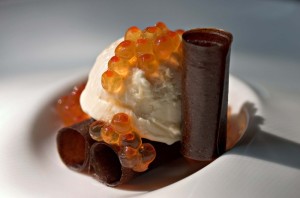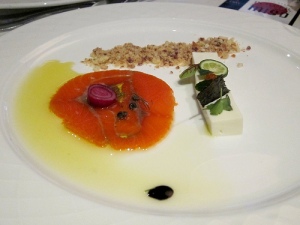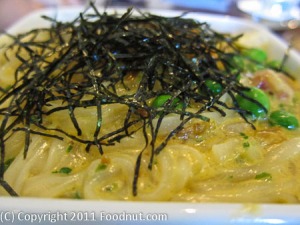I have a confession to make…I love the Food Network and spend far too much of my time watching, what many would consider, pointless cooking competition shows. From Iron Chef to Chopped to Cupcake Wars (do I lose a manly-man point for that last one?) I find myself glued to the flashing screen in front of me.
In a never-ending attempt to prove to myself that I am not just “wasting time”, I have been contemplating the spiritual lessons I have gleaned from these shows. So without further ado:
1. Tension and balance are essential.
Many a chef has been “chopped” when a judge utters the criticism that their dish was “one note”. If there is a secret to making amazing grub, it might just be providing contrasting yet complementary flavors and textures.
If you are going to make a sweet dish, it is a good idea to add a sour or spicy flavor to create an interesting tension. Likewise, if you are going to make a soup you had better include a piece of crunchy bread to contrast the textures. A meal without contrast is a recipe for a boring dining experience.
This is also true of our spiritual journeys. If we think faith is all about believing what we were taught to believe and never about doubting then we can only go so far. It becomes predictable and repetitive. However if we truly embrace belief yet are authentic in acknowledging our doubt it usually provides a deeper more robust spiritual experience. This can also be true with grace vs. justice, metaphysical vs. physical, and truth vs. mystery. Finding the tension between the two is where the magic happens.
2. Deconstruction of the classics can lead us into a deeper understanding.
Take for example the dish to the left. It is a deconstructed version of the classic bagels and lox. The chef has abstracted each of the components: bagel (in crumb form), cured salmon, cream cheese, onion, cucumber, and capers. In this the diner can experience this meal, with a long history, in a new and fresh way. In so doing they can more easily understand what each component adds to the dish. The bagels add the starch and crunch. The cheese adds the creaminess. The fish adds the smokey savoriness. The capers add the tart sourness. I think you get the point… In addition the eater can play around by tasting a couple of the components in tandem to see how those flavors play off of one another. The whole experience leaves the diner with a far greater understanding of the meal they have eaten.
Similarly deconstructing our doctrines and theologies can lead us into a more robust comprehension. It is easy to let our spiritual ancestors fight through all the questions and arguments for us, consuming whatever is placed before us. It is a worthwhile effort to dig into them to find out who they were, why they made the decisions they made, what influenced them, and what impacts it has had. When we truly understand the components that our dogmas emerged from, perhaps we can imagine them in a new way that will bring life to ourselves and those around us.
3. Exposure to diversity can produce creativity
Culinary lines have long been fought over. The French will claim their cuisine is the best in the world, the Italians theirs, the Japanese theirs, and so on. Purists from any tradition will often scoff at the rest of the inferior lot. If you, like me, have watched the original Iron Chef program, Iron Chef America‘s Japanese predecessor from the 90s, you will have noticed that each of the chefs came from a specific cuisine (French, Chinese, Japanese, Italian). Many times challengers would enter Kitchen Stadium from opposing classical schools. Most of the time the chefs would stick to their specialized flavor profiles, but occasionally a spark of creativity would come over them as they “stole” an ingredient or flavor from the rival tradition to elevate their dish. Over the show’s 7 year run this practice increased as it became known as a winning formula. The Iron Chef who showed this type of creativity more than any of the others was Masaharu Morimoto, who eventually crossed the Pacific to join Iron Chef America. In the American version of the show almost every Iron Chef and challenger follow this tradition where they “bring together the pungent flavors of east and west”.
I have found spiritual parallel here as well. There are a great many spiritual traditions in the world. For the longest time I saw them as rivals, as an inferior lot. As I have opened myself to hearing what is important and meaningful to them, I have found inspiration for my own faith tradition. Many times I have felt myself fall into a rut…thinking the same thoughts, doing the same things, falling into the same patterns. Having a real appreciation for spiritual diversity (including the agnostics and atheists I know) provides me with the spark of creativity it takes to get out of those ruts…and I’m truly thankful for that.




You must be logged in to post a comment.